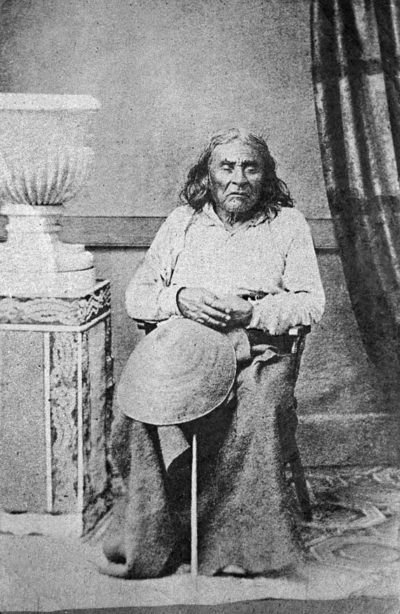Chief Seattle (Chief Seattle)

Chief Seattle’s mother Sholeetsa was Dkhw’Duw’Absh (Duwamish) and his father Shweabe was chief of the Dkhw’Suqw’Absh (the Suquamish tribe). Seattle was born around 1780 on or near Blake Island, Washington. One source cites his mother’s name as Wood-sho-lit-sa. The Duwamish tradition is that Seattle was born at his mother’s village of Stukw on the Black River, in what is now the city of Kent, Washington, and that Seattle grew up speaking both the Duwamish and Suquamish dialects of Lushootseed. Because Native descent among the Salish peoples was not solely patrilineal, Seattle inherited his position as chief of the Duwamish Tribe from his maternal uncle. Seattle earned his reputation at a young age as a leader and a warrior, ambushing and defeating groups of tribal enemy raiders coming up the Green River from the Cascade foothills, and attacking the Chimakum and the S’Klallam tribes living on the Olympic Peninsula. Like many of his contemporaries, he owned slaves captured during his raids. He was tall and broad for a Puget Sound native, standing nearly six feet tall; Hudson’s Bay Company traders gave him the nickname Le Gros (The Big Guy). He was also known as an orator; and when he addressed an audience, his voice is said to have carried from his camp to the Stevens Hotel at First and Marion, a distance of 3⁄4 mile (1.2 km).
Chief Seattle took wives from the village of Tola’ltu just southeast of Duwamish Head on Elliott Bay (now part of West Seattle). His first wife La-Dalia died after bearing a daughter. He had three sons and four daughters with his second wife, Olahl. The most famous of his children was his first, Kikisoblu or Princess Angeline. Seattle was converted to Christianity by French missionaries, and was baptized in the Roman Catholic Church, with the baptismal name Noah, probably in 1848 near Olympia, Washington. For all his skill, Seattle was gradually losing ground to the more powerful Patkanim of the Snohomish when white settlers started showing up in force around 1850. (In later years, Seattle claimed to have seen the ships of the Vancouver Expedition as they explored Puget Sound in 1792.) When his people were driven from their traditional clamming grounds, Seattle met Doc Maynard in Olympia; they formed a friendly relationship useful to both. Persuading the settlers at the white settlement of Duwamps to rename their town Seattle, Maynard established their support for Chief Seattle’s people and negotiated relatively peaceful relations with the tribes. Chief Seattle kept his people out of the Battle of Seattle in 1856. Afterwards, he was unwilling to lead his tribe to the reservation established, since mixing Duwamish and Snohomish was likely to lead to bloodshed. Maynard persuaded the government of the necessity of allowing Seattle to remove to his father’s longhouse on Agate Passage, ‘Old Man House’ or Tsu-suc-cub. Seattle frequented the town named after him, and had his photograph taken by E. M. Sammis in 1865. He died June 7, 1866, on the Suquamish reservation at Port Madison, Washington.
Born
- January, 01, 1786
- USA
- Blake Island, Washington
Died
- June, 07, 1866
- USA
- Port Madison, Washington
Cemetery
- Suquamish Memorial Cemetery
- Suquamish, Washington
- USA


